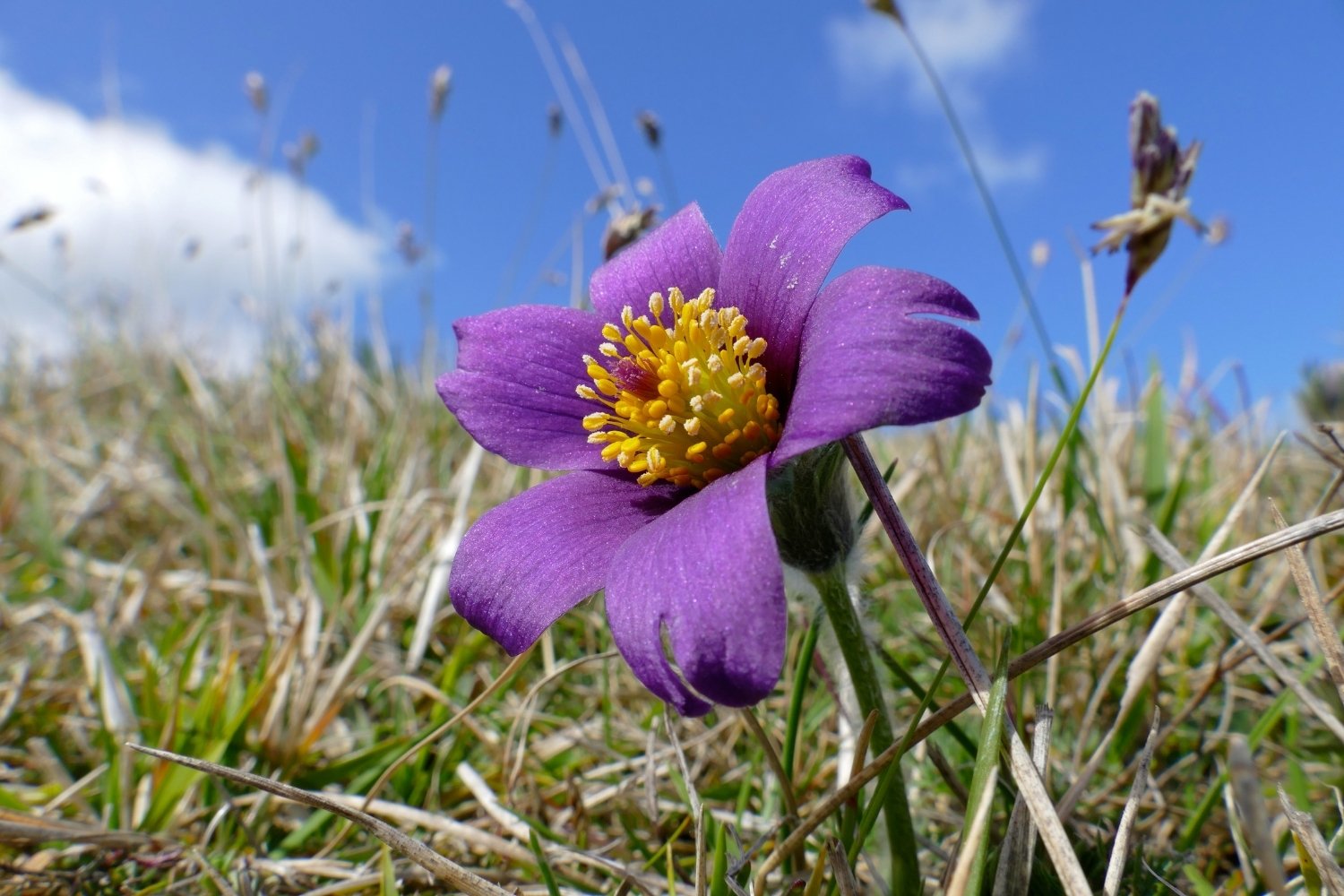
Pulsatilla, often known as the pasque flower, is a captivating plant with a rich history and unique characteristics. Did you know that this perennial herb is not just a pretty face in the garden? It's also been used in traditional medicine for centuries. From its vibrant purple petals to its fluffy seed heads, Pulsatilla is a plant full of surprises. But what makes it truly fascinating? Is it the way it blooms early in spring, or perhaps its ability to thrive in rocky, well-drained soils? Maybe it's the folklore and myths surrounding it. Let's dive into 32 intriguing facts about Pulsatilla that will leave you amazed and eager to learn more about this remarkable plant.
What is Pulsatilla?
Pulsatilla, also known as Pasque flower, is a genus of herbaceous perennials found in meadows and prairies. These plants are known for their striking flowers and medicinal properties. Let's dive into some fascinating facts about Pulsatilla.
-
Pulsatilla belongs to the Ranunculaceae family, which includes buttercups and clematis.
-
The name "Pulsatilla" is derived from the Latin word "pulsare," meaning "to beat," referring to the plant's swaying in the wind.
-
There are about 33 species of Pulsatilla, each with unique characteristics.
-
Pulsatilla flowers are usually purple, but some species have white, yellow, or red blooms.
-
These plants are native to Europe, Asia, and North America.
-
Pulsatilla is often found in alpine and subalpine regions, thriving in well-drained soils.
Medicinal Uses of Pulsatilla
Pulsatilla has been used in traditional medicine for centuries. Its various parts are believed to have healing properties.
-
Pulsatilla is used in homeopathy to treat respiratory issues like asthma and bronchitis.
-
The plant is also used to alleviate menstrual problems, including cramps and irregular periods.
-
Pulsatilla is believed to have sedative properties, helping to reduce anxiety and insomnia.
-
It is sometimes used to treat digestive issues such as indigestion and bloating.
-
The plant's extracts are applied topically to treat skin conditions like eczema and acne.
-
Pulsatilla is known for its anti-inflammatory properties, making it useful in treating arthritis and other inflammatory conditions.
Growing Pulsatilla
Cultivating Pulsatilla can be a rewarding experience for gardeners. These plants are relatively easy to grow and maintain.
-
Pulsatilla prefers full sun to partial shade, making it versatile for different garden settings.
-
The plant thrives in well-drained, sandy, or loamy soil.
-
Pulsatilla is drought-tolerant once established, requiring minimal watering.
-
These plants are hardy and can withstand cold temperatures, making them suitable for various climates.
-
Pulsatilla can be propagated by seeds or division, with seeds sown in the fall or spring.
-
The plant's fuzzy seed heads add visual interest to gardens even after the flowers have faded.
Interesting Facts About Pulsatilla
Beyond its beauty and medicinal uses, Pulsatilla has some intriguing characteristics.
-
Pulsatilla flowers are among the first to bloom in spring, often emerging through the snow.
-
The plant's leaves are finely divided and covered in soft hairs, giving them a delicate appearance.
-
Pulsatilla is sometimes called "windflower" due to its tendency to sway in the breeze.
-
In folklore, Pulsatilla is associated with Easter and rebirth, symbolizing new beginnings.
-
The plant is toxic if ingested in large quantities, so it should be handled with care.
-
Pulsatilla is a favorite among pollinators, attracting bees and butterflies to gardens.
Pulsatilla in Culture and History
Pulsatilla has made its mark in various cultures and historical contexts.
-
In ancient times, Pulsatilla was used by Native Americans for its medicinal properties.
-
The plant is mentioned in traditional Chinese medicine texts, where it is known as "Bai Tou Weng."
-
Pulsatilla has been featured in poetry and literature, often symbolizing purity and resilience.
-
The plant's name "Pasque flower" is derived from "Pascha," the Latin word for Easter, reflecting its early spring bloom.
-
In medieval Europe, Pulsatilla was believed to ward off evil spirits and protect against witchcraft.
-
The plant has been used in various traditional remedies across different cultures, highlighting its widespread significance.
-
Pulsatilla is sometimes used in floral arrangements and dried flower crafts due to its unique appearance.
-
The plant's striking beauty and historical significance make it a popular subject in botanical art and illustrations.
Pulsatilla's Fascinating World
Pulsatilla, often called the Pasque Flower, is more than just a pretty bloom. This plant has a rich history in traditional medicine and folklore. Known for its vibrant colors and unique appearance, Pulsatilla is a favorite among gardeners and herbalists alike. Its ability to thrive in varied climates makes it a versatile addition to any garden.
Beyond its beauty, Pulsatilla has been used to treat respiratory issues, skin conditions, and even emotional stress. Its medicinal properties have been recognized for centuries, making it a staple in homeopathic remedies.
Whether you're a gardening enthusiast or someone interested in natural remedies, Pulsatilla offers a wealth of benefits. Its resilience and therapeutic qualities make it a plant worth knowing. So next time you see this charming flower, remember its rich history and the many ways it can enhance your life.
Was this page helpful?
Our commitment to delivering trustworthy and engaging content is at the heart of what we do. Each fact on our site is contributed by real users like you, bringing a wealth of diverse insights and information. To ensure the highest standards of accuracy and reliability, our dedicated editors meticulously review each submission. This process guarantees that the facts we share are not only fascinating but also credible. Trust in our commitment to quality and authenticity as you explore and learn with us.
